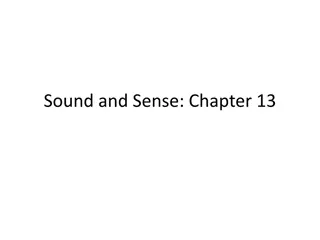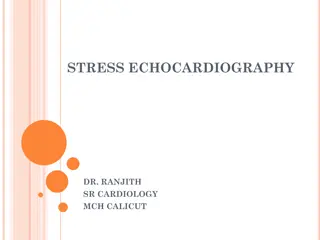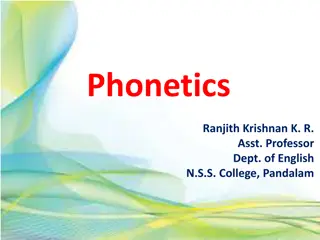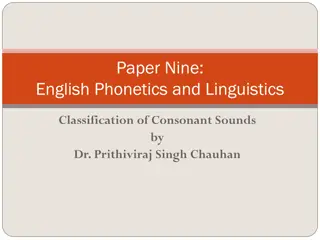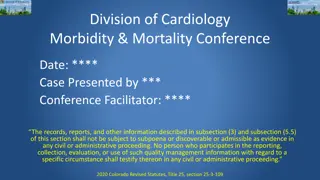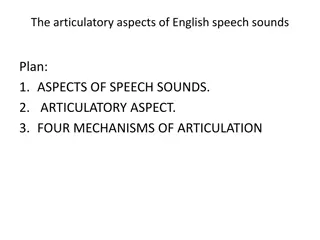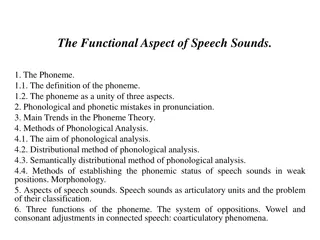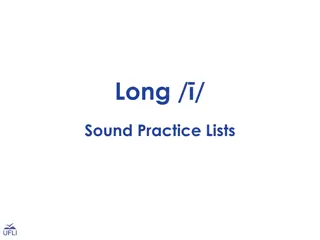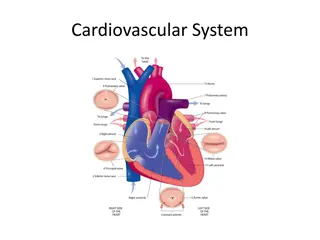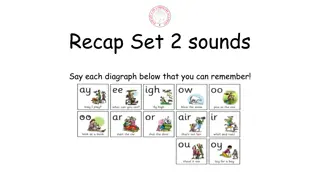Understanding Heart Sounds and Murmurs in Cardiology
Explore the intricacies of heart sounds and murmurs in cardiology, including their locations, characteristics, timing, and associated factors. Learn about the pitch, loudness, and types of murmurs, and understand the distinctions between systolic and diastolic murmurs. Enhance your knowledge of cardiac physiology and pathology through a comprehensive overview of heart sounds and murmurs.
Download Presentation

Please find below an Image/Link to download the presentation.
The content on the website is provided AS IS for your information and personal use only. It may not be sold, licensed, or shared on other websites without obtaining consent from the author. Download presentation by click this link. If you encounter any issues during the download, it is possible that the publisher has removed the file from their server.
E N D
Presentation Transcript
CSI 202 Skills Lab 4 HEART SOUNDS DARYL P. LOFASO, Ph.D.,M..Ed., RRT
Heart Sounds S1: lub occurs at the beginning of systole (mitral and tricuspid close) S2: dub marks the start of diastole, (aortic and pulmonic close) S3: early signs of CHF (ventricular gallop) S4: pulmonic stenosis, aortic stenosis, hypertension, MI & cardiomyopathy (atrial gallop)
Cardiac Murmurs Three Main Factors High flow rate through normal or abnormal orifices Forward flow through a constricted or irregular orifice or into a dilated vessel or chamber Backward or regurgitant flow through an incompetent valve, septal defect, or patent ductus arteriosus.
Timing of Heart Sounds Systolic: Between S1and S2 Diastolic: Between S2and S1 Holosystolic: continuous throughout systole
Loudness Scale: 1-6 Grade Grade 1: Very faint Grade 5: Loud with palpable precardical thrill Grade 6: Audible even when the stethoscope is lifted off chest
Heart Sounds: Pitch Low-velocity low pitched rumbling (mitral stenosis) Large diastolic pressure gradient high pitched murmur (aortic regurgitation)
Systolic Murmurs Systolic murmurs can be divided into Mid-systolic Holo-systolic (pan-systolic)
Systolic Murmur Mid-Systolic Murmurs Aortic Stenosis Radiates to carotid arteries; harsh or barking Pulmonic Stenosis Note: blood flow in a normal direction across a valve that is narrowed or calcified. Hypertrophic cardiomyopathy Flow murmur Note: valve is normal but the flow is increased and this causes turbulence.
Systolic Murmur Holo-systolic murmurs Mitral regurgitation Medium-pitched blowing Tricuspid regurgitation Ventricular septal defect (VSD) Note: blood flowing the wrong way when the ventricle contracts
Diastolic Murmurs Diastolic murmurs can be divided into Early diastolic murmurs Diastolic rumbles
Diastolic murmur Early Diastolic Murmurs Early Diastolic Murmurs (decrescendo) Aortic Insufficiency (Regurgitation) Blowing early diastolic Pulmonic Insufficiency Accentuated P2 Note: blood flowing the wrong way (backwards) during diastole
Diastolic Murmurs Diastolic Rumbles Diastolic Rumbles (low-pitched rumble) Mitral stenosis Opening snap with mid-diastolic rumble Tricuspid stenosis Mid-diastolic rumble, louder with inspiration & decrease with exhalation Note: blood flow is normal, but across a narrowed valve opening


